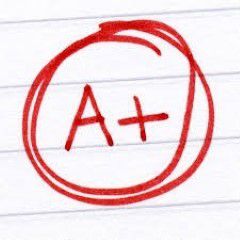Assignment One Quantitative methods in Economics Complete Solution
Assignment One quantitative methods in Economics
(1) “This assignment is to be completed individually. Students are allowed to discuss or share ideas with your fellow student however your answer should be unique and cannot copy others’ work as mentioned in our course outline.
(2) “Create a title page for your assignment and include the name(s) of the people with whom you worked. “
(3) Please type the assignment. Please make effort to present your work professionally.
(4) Questions will be chosen from the assignment to mark for your final grade.
(5) Please hand in the printed out assignment before class. No late assignment will be accepted.
Question One:
Define population and sample. Describe and distinguish between descriptive statistics and inferential statistics, between a population and a sample.
Question Two:
2. What is a random sample? Give one example of economic question that you would like to investigate. Then answer the question what kind of data would you need to help you to answer your question? How do you achieve a random sample data for your question?
Question Three
3. Refer the excel file, assignment1Excel. This was the grade that my summer students receive in the end. Could you add the last digit of your student number to the grades and create a new series of grades. (my last digit number is 9).Then,
a) Please draw a histogram of your students’ grade. Please refer to the Youtube Video, .Creating a Histogram In Excel 2010, For bin range, please use five end points so that you have 5 group of students ( that is you group the class into A, B, C, D, F) . In our lecturing, we used equal interval, you do not have to use equal intervals for the 5 class, but make sure there is no gap between intervals) Please copy your bin range and the histogram graph and hand in the results.
b) Describe the data’s central tendency using numerical values, including mean, mode, median, the value of the first quartile, the value of the third quartile, (Please write the formula out to get the result for these numbers)
c) Describe the variability of data numerically, including range, variance, standard deviation, coefficient of variation. , (Please write the formula out to get the result for these numbers)
d) Calculate the correlation between your students’ score and my student score. , (Please write the formula out to get the result for these numbers)
Question Four
A company wishes to evaluate the effectiveness of a marketing campaign. Seventy five percent of all potential professors were reached in a focused advertising program. Twenty eight percent of those contacted adopted the book while 8% of the adoptions came from professors who did not receive the promotional material. Define the following events of interest:
A1 = Professor received advertising material
A2 = Professor did not receive advertising material
B1 = Professor adopts the book
B2 = Professor does not adopt the book
1. What is the probability that a professor who does not receive advertising material has not adopted the book?
2. What is the probability that a professor who adopts the book received the advertising material?
3. What is the probability that a professor who adopts the book has not received the advertising material?
Question Five
Assuming that daily stock market returns are independent random event, the probability of stock return going up each day is 60% and the probability of stock return drop is 40%. There are five trading days in a week.
a. If stock return was positive on Monday, what is the probability of stock going up on Tuesday?
b. What is the probability that stock goes up on Monday, Tuesday and Wednesday and goes down on Thursday and Friday?
c. What is the probability of that stock market return will go up for three days within a week?
Question Six
For large companies such as GE, IBM etc, often there are a large group of analysts following their performance, i.e. whether these companies’ earnings are good for shareholders of these companies. These analysts will each come up with estimated earnings per share (EPS) for the company they follow. There is an average of these estimates called consensus estimate. Let’s assume that an analyst had an estimate of ABC company’s EPS have the following probabilities: the probability of (EPS exceeded consensus)=0.45,probability of(EPS met consensus)=.30 and probability of( EPS fell short of consensus)=0.25. These are prior probabilities.
Now a company announces that it is expanding factory capacity, this is new information, called expansion. We know that P(expansion/EPS exceeded consensus)=0.75, P(expansion/EPS met consensus)=0.20 and P(exansion/EPS fell short of consensus)=0.05
What is P(EPS exceeded consensus/expansion)?
Assignment One Quantitative methods in Economics Complete Solution
A company wishes to evaluate the effectiveness of a marketing campaign. Seventy five percent of all potential professors were reache...





Studyacer
Senior JournalistSell Your Solution Report Solution Support Center
Online Users
-
 Studyacer
Today
Studyacer
Today



A+ - Thank you!
Thanks for the positive feedback!